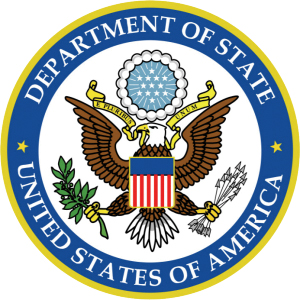Innovating Institutional Cultures
Monday, January 11th, 2010John Hagel is in a small category of thinkers who manage to routinely be thinking ahead of the curve ( he calls his blog, where he features longer but more infrequent posts than is typical, Edge Perspectives). I want to draw attention to the core conclusion of his latest:
Challenging Mindsets: From Reverse Innovation to Innovation Blowback
Innovation blowback
Five years ago, John Seely Brown and I wrote an article for the McKinsey Quarterly entitled “Innovation Blowback: Disruptive Management Practices from Asia.” In that article, we described a series of innovations emerging in Asia that were much more fundamental than isolated product or service innovations. We drew attention to a different form of innovation – institutional innovation. In arenas as diverse as motorcycles, apparel, turbine engines and consumer electronics, we detected a much more disruptive form of innovation.
In these very diverse industries, we saw entrepreneurs re-thinking institutional arrangements across very large
numbers of enterprises, offering all participants an opportunity to learn faster and innovate more effectively by working together. While Western companies were lured into various forms of financial leverage, these entrepreneurs were developing sophisticated approaches to capability leverage in scalable business networks that could generate not just one product innovation, but an accelerating stream of product and service innovations.
…. Institutional innovation is different – it defines new ways of working together, ways that can scale much more effectively across large numbers of very diverse enterprises. It provides ways to flexibly reconfigure capability while at the same time building long-term trust based relationships that help participants to learn faster. That’s a key breakthrough – arrangements that support scalable trust building, flexibility and learning at the same time. Yet this breakthrough is occurring largely under the radar of most Western executives, prisoners of mindsets that prevent them from seeing these radical changes.
Read the whole thing here.
Hagel is describing a mindset that is decentralized and adaptive with a minimum of barriers to entry that block participation or information flow. One that should be very familiar to readers who are aware of John Boyd’s OODA Loop, the stochastic/stigmergic innovation model of John Robb’s Open Source Warfare, Don Vandergriff’s Adaptive Leadership methodology and so on. It’s a vital paradigm to grasp in order to navigate and thrive in the 21st century.
Western executives (think CEO) may be having difficulty grasping the changes that Hagel describes because they run counter to cultural trends emerging among this generation of transnational elites ( not just big business). Increasingly, formerly quasi-meritocratic and democratic Western elites in their late thirties to early sixties are quietly embracing oligarchic social stratification and use political or institutional power to “lock in” the comparative advantages they currently enjoy by crafting double standards through opaque, unaccountable authorities issuing complex and contradictory regulations, special exemptions and insulating ( isolating) themselves socially and physically from the rest of society. It’s a careerism on steroids reminiscient of the corrupt nomenklatura of the late Soviet period.
As the elite cream off resources and access for themselves they are increasingly cutting off the middle-class from the tools of social mobility and legal equality through policies that drive up barriers to entry and participation in the system. Such a worldview is inherently zero-sum and cannot be expected to notice or value non-zero sum innovations.
In all probability, as an emergent class of rentiers, they fear such innovations when they recognize them. If allowed to solidify their position into a permanent, transnational, governing class, they will take Western society in a terminal downward spiral.

 that theory to the design of organizations, staffs, leadership, information management and the creation of cohesion in units. In doing so, he takes on many currently popular theories such as Effects-Based Operations, the observe-orient-decide-act loop, the use of postmodern theory and language.
that theory to the design of organizations, staffs, leadership, information management and the creation of cohesion in units. In doing so, he takes on many currently popular theories such as Effects-Based Operations, the observe-orient-decide-act loop, the use of postmodern theory and language.
 House staffers, determined to protect the authority of the POTUS over foreign policy and the bureaucracy at State. We have seen this struggle in the past with Al Haig, Cyrus Vance, William Rogers, Cordell Hull, Robert Lansing and other SECSTATEs who sooner or later found themselves sidelined and excluded from key foreign policy decisions by the president. However, this is not just a case of Obama insiders distrusting and attempting to “box in” the Clintons as political rivals, by using other high profile players ( though that has been done to Clinton).
House staffers, determined to protect the authority of the POTUS over foreign policy and the bureaucracy at State. We have seen this struggle in the past with Al Haig, Cyrus Vance, William Rogers, Cordell Hull, Robert Lansing and other SECSTATEs who sooner or later found themselves sidelined and excluded from key foreign policy decisions by the president. However, this is not just a case of Obama insiders distrusting and attempting to “box in” the Clintons as political rivals, by using other high profile players ( though that has been done to Clinton). right, requires a sizable budget increase, perhaps upwards of 50 %. This cut off the nose to spite our foreign policy face niggardliness by the legislature is not new. Go back and read the memoirs of diplomats of a century ago. They wrestled with the same budgetary penury as State has to deal with today; even during WWII when you’d have thought money would be no object, Congress stiffed diplomats in hazardous, war-zone, postings on their food allowances. The foreign service was long the preserve of wealthy, well-connected, white men because back in the day, only they could afford to live on a State Department salary.
right, requires a sizable budget increase, perhaps upwards of 50 %. This cut off the nose to spite our foreign policy face niggardliness by the legislature is not new. Go back and read the memoirs of diplomats of a century ago. They wrestled with the same budgetary penury as State has to deal with today; even during WWII when you’d have thought money would be no object, Congress stiffed diplomats in hazardous, war-zone, postings on their food allowances. The foreign service was long the preserve of wealthy, well-connected, white men because back in the day, only they could afford to live on a State Department salary.

